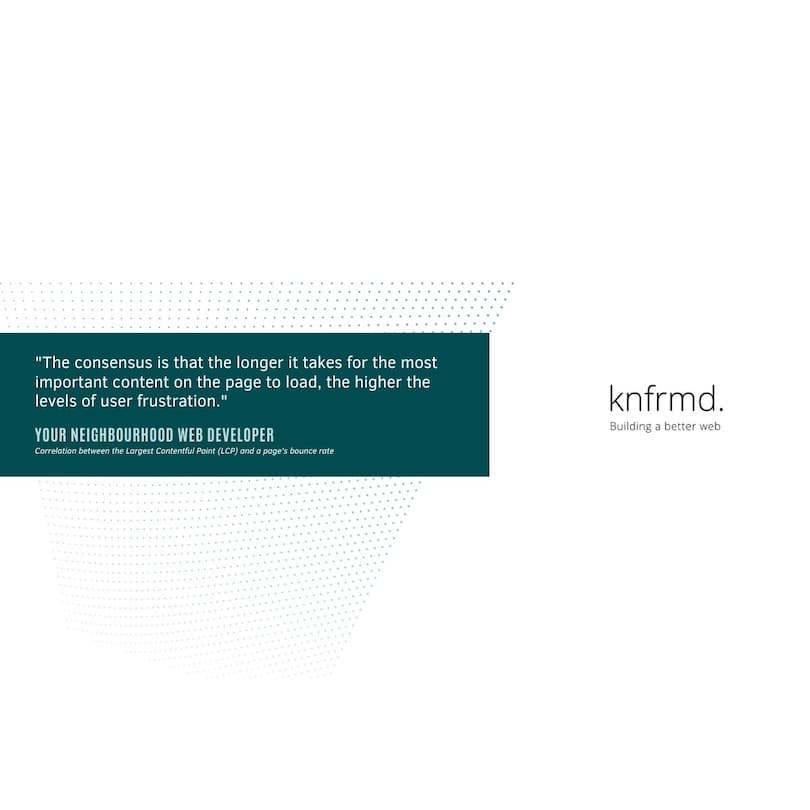Correlation Between Largest Contentful Paint (LCP) and Bounce Rate
Explore how your website's Largest Contentful Paint (LCP) impacts bounce rates and user engagement. Discover real-world examples and proven strategies to improve LCP and reduce bounce rates for better conversions.
Case Studies
Studies conducted by Google and companies like NDTV have shown a strong correlation between Largest Contentful Paint (LCP) and bounce rates, as well as conversions and sales. When a page takes too long to load, users are likely to leave, leading to higher bounce rates and fewer conversions. For instance, NDTV reduced their LCP by 55% and observed a 50% reduction in bounce rates as a result.

Diagnosing Largest Contentful Paint (LCP) Issues
There are several tools available to diagnose and improve LCP issues. Free tools like Chrome DevTools, the Web Vitals extension, and PageSpeed Insights provide actionable insights. PageSpeed Insights, for example, offers both field data—collected from real-world users—and lab data, which simulates loading conditions to assess the LCP, FCP (First Contentful Paint), and other key metrics.
By analyzing when LCP is recorded and using the provided improvement opportunities, you can identify areas to optimize, such as improving server response times, optimizing images, and preloading key assets.
Common Fixes for LCP Issues
Here are some common fixes for improving LCP:
- Review assets and remove or optimize any unused CSS and JavaScript files.
- Address layout shift issues that could affect the rendering of the primary content above the fold.
- Create critical assets and use the
`link rel="preload"`attribute to load them early, ensuring that the main content above the fold renders quickly and becomes interactive sooner. - Optimize images and use modern formats such as WebP to reduce load times and bandwidth usage.